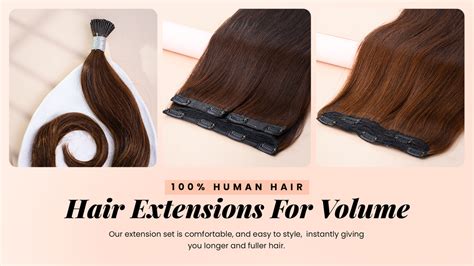Introduction: The Prevalence and Impact of Thin Hair
Thinning hair affects millions of people worldwide, regardless of age or gender. According to the American Academy of Dermatology, approximately 50% of men and 25% of women experience thinning hair or baldness by the age of 50. Thin hair can be caused by genetics, hormonal changes, medical conditions, and lifestyle factors. While there is no cure for thinning hair, there are effective treatments available to restore volume and thickness.

Hair Weaving: A Solution for Thinning Hair
Hair weaving is a non-surgical hair restoration technique that involves adding extensions to existing hair to create the appearance of thicker, fuller locks. Hair extensions are typically made from synthetic or human hair and are bonded to the natural hair using a variety of methods, including thread, glue, or heat.
Benefits of Hair Weaving
Hair weaving offers numerous benefits for individuals with thin hair, including:
- Increased volume and thickness: Hair extensions can add dramatic volume and thickness to thin hair, creating the illusion of a fuller, healthier head of hair.
- Length and style versatility: Hair extensions can be customized to match the length, texture, and color of the natural hair, allowing for endless styling possibilities.
- Natural appearance: Modern hair weaving techniques ensure a seamless blend between the natural hair and the extensions, resulting in a natural-looking appearance.
- Non-surgical: Hair weaving is a non-invasive procedure that does not require surgery or incisions, making it a suitable option for those who are not interested in or not suitable for surgical hair restoration.
Types of Hair Weaving Techniques
There are several different hair weaving techniques available, each with its own advantages and disadvantages.
| Technique | Advantages | Disadvantages |
|---|---|---|
| Track Weaving | – Secure and durable – Versatility in length and thickness | – Can be time-consuming – May cause hair damage |
| Micro-Link Weaving | – Less visible than track weaving – Natural and lightweight feel | – May require special equipment – Can be more expensive |
| Fusion Weaving | – Virtually invisible – Long-lasting | – Requires heat application – Can be damaging to hair |
Choosing the Right Hair Extensions
When selecting hair extensions, it is crucial to consider several factors, including:
- Material: Synthetic extensions are more affordable but less durable and natural-looking than human hair extensions.
- Length: The length of the extensions should complement the natural hair length and desired style.
- Texture: The texture of the extensions should match the texture of the natural hair to ensure a seamless blend.
- Color: The color of the extensions should be a close match to the natural hair color to avoid an unnatural or patchy appearance.
Hair Weaving Process
The hair weaving process typically involves the following steps:
- Consultation: A hair stylist will assess the condition of the natural hair and determine the best hair weaving technique and type of extensions.
- Preparation: The natural hair is washed and styled to prepare it for the extensions.
- Application: The hair extensions are attached to the natural hair using the chosen technique.
- Styling: The extensions are trimmed, shaped, and styled to blend seamlessly with the natural hair.
Maintenance and Care
Proper maintenance and care are essential to extend the lifespan of hair extensions and prevent hair damage.
Tips and Tricks:
- Use gentle hair care products: Harsh shampoos and conditioners can strip away the natural oils that protect the extensions.
- Avoid heat styling: Excessive heat can damage both the extensions and the natural hair.
- Brush your hair regularly: Regular brushing helps to distribute natural oils and prevent tangles.
- Protect extensions from chlorine: Chlorine can damage the extensions, so it is advisable to wear a swim cap when swimming.
Common Mistakes to Avoid:
- Overwashing: Overwashing can remove essential oils and lead to dryness and brittleness.
- Brushing vigorously: Rough brushing can cause the extensions to detach or tangle.
- Using harsh chemicals: Chemical treatments, such as bleaching or perming, can damage the extensions.
- Sleeping in wet hair: Sleeping in wet hair can lead to tangles and breakage.
Conclusion
Hair weaving is a versatile and effective solution for individuals with thinning hair who desire to regain volume and fullness. By choosing the right hair extensions and following proper maintenance guidelines, hair weaving can provide long-lasting results and a natural-looking head of hair.
